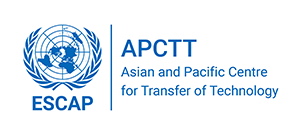Ballast Water Treatment
Ships when leaving the port empty, take seawater into ballast tanks for stability and to adjust buoyancy. When the ballast water is emptied at a different location, it releases microorganisms into the location, causing environmental pollution and ecological imbalance. NCL scientists have developed an apparatus which can filtrate and disinfect sea water/ ship’s ballast water. It is based on a mechanical process that kills micro-organisms to the required levels, using hydrodynamic cavitation and rupture of cavities to kill micro-organisms. They can also be used in making potable drinking water from a contaminated source.
Sector: Environment
Country: India
Area of Application: · Sea water treatment · Ship’s ballast water treatment · Making potable drinking water from a contaminated source
Keywords: water treament, ship ballast, seawater, potable drinking water
Advantages: · Eco-friendly as using hydrodynamic cavitations without using any chemicals, UV or ultrasound · No harmful by-products · Efficient disinfection technology · One of the best alternatives to current technology · Economical · Easily installed on the vessel- minimum area for installation as filtration and disinfection happen in a single equipment
Environmental aspects:
Development Status: Laboratory Model
Legal Protection: Patent
Technical specifications:
Transfer Terms: Technology Licensing
Target Countries:
Estimated cost (US$):
Upload any relevant document:
Contact Person: National Chemical Laboratory, CSIR
Address: A208, PAML Building, National Chemical Laboratory Dr Homi Bhabha Road,
City: Pune
Country: India
Zip/Pin Code: 411007

